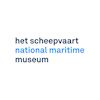
22. Oost 1, Maps & Marvels: Flora and fauna
Flora and fauna from Asia, Africa and America made a huge impression on Europeans of the time. The world seemed to be richer and more varied than people had ever been able to imagine. Tropical woods, horn, mother-of-pearl, coral, tortoiseshell and ivory... collectors brought these natural materials together and attempted to categorise these amazing natural wonders. The materials were so precious that metalworkers often gave them silver or gold stands, doing their best to elevate the objects to an even higher artistic plane, and to outdo nature itself. For instance, here you can see a magnificent nautilus shell. The exterior of the shell has been very carefully sanded or etched away, revealing the underlying mother-of-pearl. And there is a coconut that has been made into an exclusive drinks bottle. But perhaps the most striking object is the bezoar stone, a small ball that looks somewhat like a nutmeg, in a decorative golden casing with a chain attached to it. Medicinal and mystical powers were ascribed to the stone, which is in fact not a rock at all but came from the stomach of a goat. It was thought to provide an effective antidote to arsenic, a deadly poison.


The National Maritime Museum
Het Scheepvaartmuseum (The National Maritime Museum) shows the strong connection between the maritime world and society as a whole, and more specifically the impact of this on the lives of many individuals. The collection of The National Maritime Museum is one of the largest and most notable maritime collections in the world with approximately 400,000 objects, including paintings, models of ships, navigation instruments, and maps of the world. Discover 500 years of Dutch Maritime history as well as its strong links to today’s society and the society of the future.
- Kattenburgerplein 1
- Amsterdam Netherlands
- (020) 52 32 222
- www.hetscheepvaartmuseum.nl
